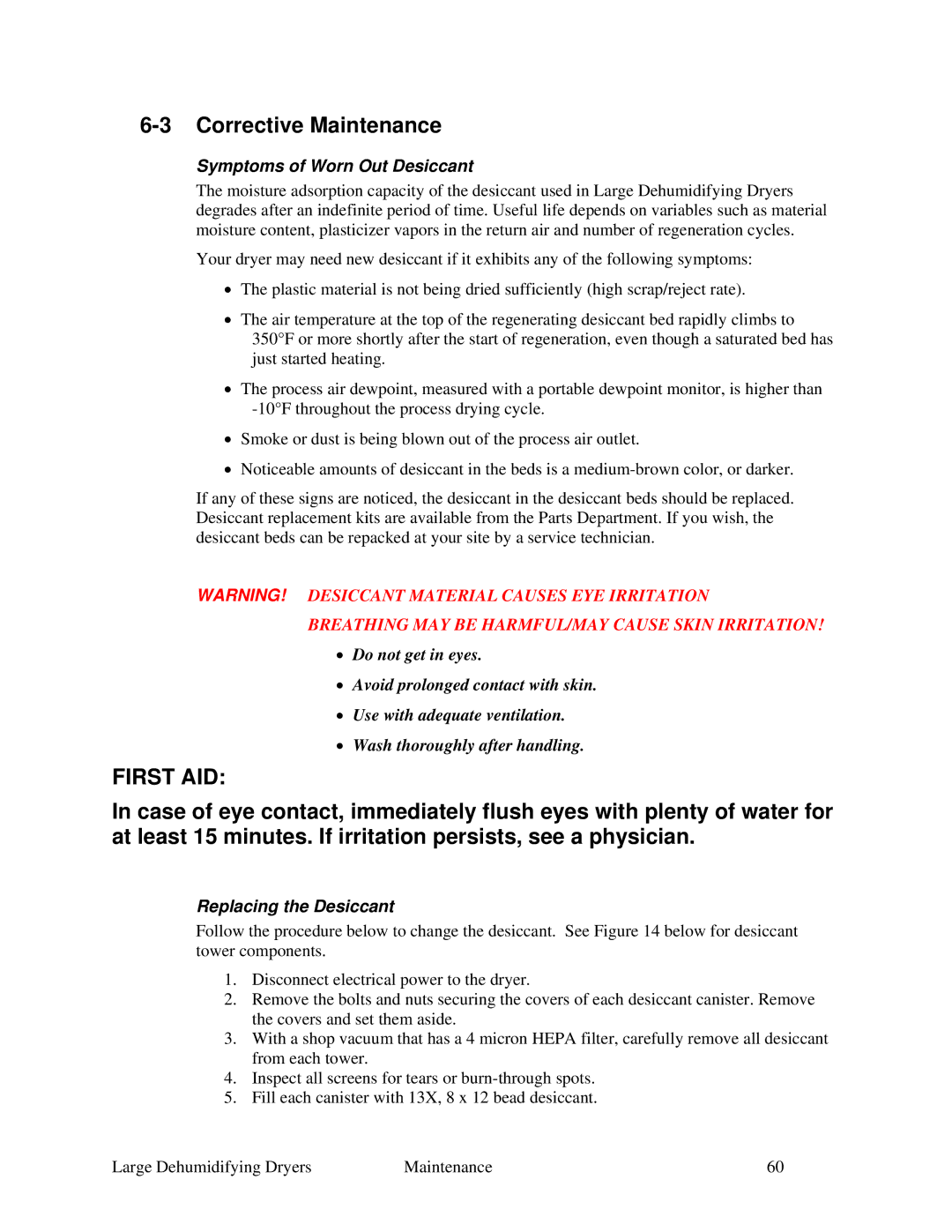6-3 Corrective Maintenance
Symptoms of Worn Out Desiccant
The moisture adsorption capacity of the desiccant used in Large Dehumidifying Dryers degrades after an indefinite period of time. Useful life depends on variables such as material moisture content, plasticizer vapors in the return air and number of regeneration cycles.
Your dryer may need new desiccant if it exhibits any of the following symptoms:
•The plastic material is not being dried sufficiently (high scrap/reject rate).
•The air temperature at the top of the regenerating desiccant bed rapidly climbs to 350°F or more shortly after the start of regeneration, even though a saturated bed has just started heating.
•The process air dewpoint, measured with a portable dewpoint monitor, is higher than
•Smoke or dust is being blown out of the process air outlet.
•Noticeable amounts of desiccant in the beds is a
If any of these signs are noticed, the desiccant in the desiccant beds should be replaced. Desiccant replacement kits are available from the Parts Department. If you wish, the desiccant beds can be repacked at your site by a service technician.
WARNING! DESICCANT MATERIAL CAUSES EYE IRRITATION BREATHING MAY BE HARMFUL/MAY CAUSE SKIN IRRITATION!
•Do not get in eyes.
•Avoid prolonged contact with skin.
•Use with adequate ventilation.
•Wash thoroughly after handling.
FIRST AID:
In case of eye contact, immediately flush eyes with plenty of water for at least 15 minutes. If irritation persists, see a physician.
Replacing the Desiccant
Follow the procedure below to change the desiccant. See Figure 14 below for desiccant tower components.
1.Disconnect electrical power to the dryer.
2.Remove the bolts and nuts securing the covers of each desiccant canister. Remove the covers and set them aside.
3.With a shop vacuum that has a 4 micron HEPA filter, carefully remove all desiccant from each tower.
4.Inspect all screens for tears or
5.Fill each canister with 13X, 8 x 12 bead desiccant.
Large Dehumidifying Dryers | Maintenance | 60 |
